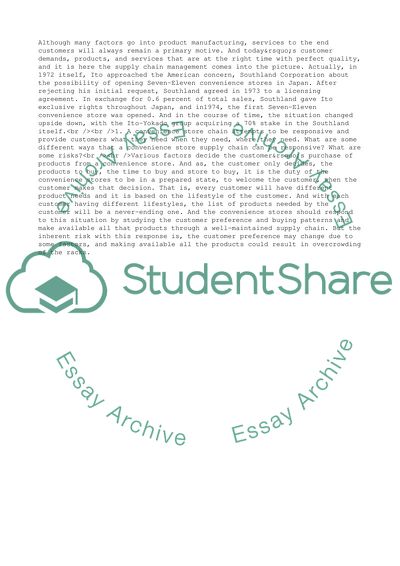Cite this document
(Company Analysis of 7-11 Japan Case Study Example | Topics and Well Written Essays - 1500 words - 1, n.d.)
Company Analysis of 7-11 Japan Case Study Example | Topics and Well Written Essays - 1500 words - 1. https://studentshare.org/business/1706510-7-11-japan
Company Analysis of 7-11 Japan Case Study Example | Topics and Well Written Essays - 1500 words - 1. https://studentshare.org/business/1706510-7-11-japan
(Company Analysis of 7-11 Japan Case Study Example | Topics and Well Written Essays - 1500 Words - 1)
Company Analysis of 7-11 Japan Case Study Example | Topics and Well Written Essays - 1500 Words - 1. https://studentshare.org/business/1706510-7-11-japan.
Company Analysis of 7-11 Japan Case Study Example | Topics and Well Written Essays - 1500 Words - 1. https://studentshare.org/business/1706510-7-11-japan.
“Company Analysis of 7-11 Japan Case Study Example | Topics and Well Written Essays - 1500 Words - 1”. https://studentshare.org/business/1706510-7-11-japan.


